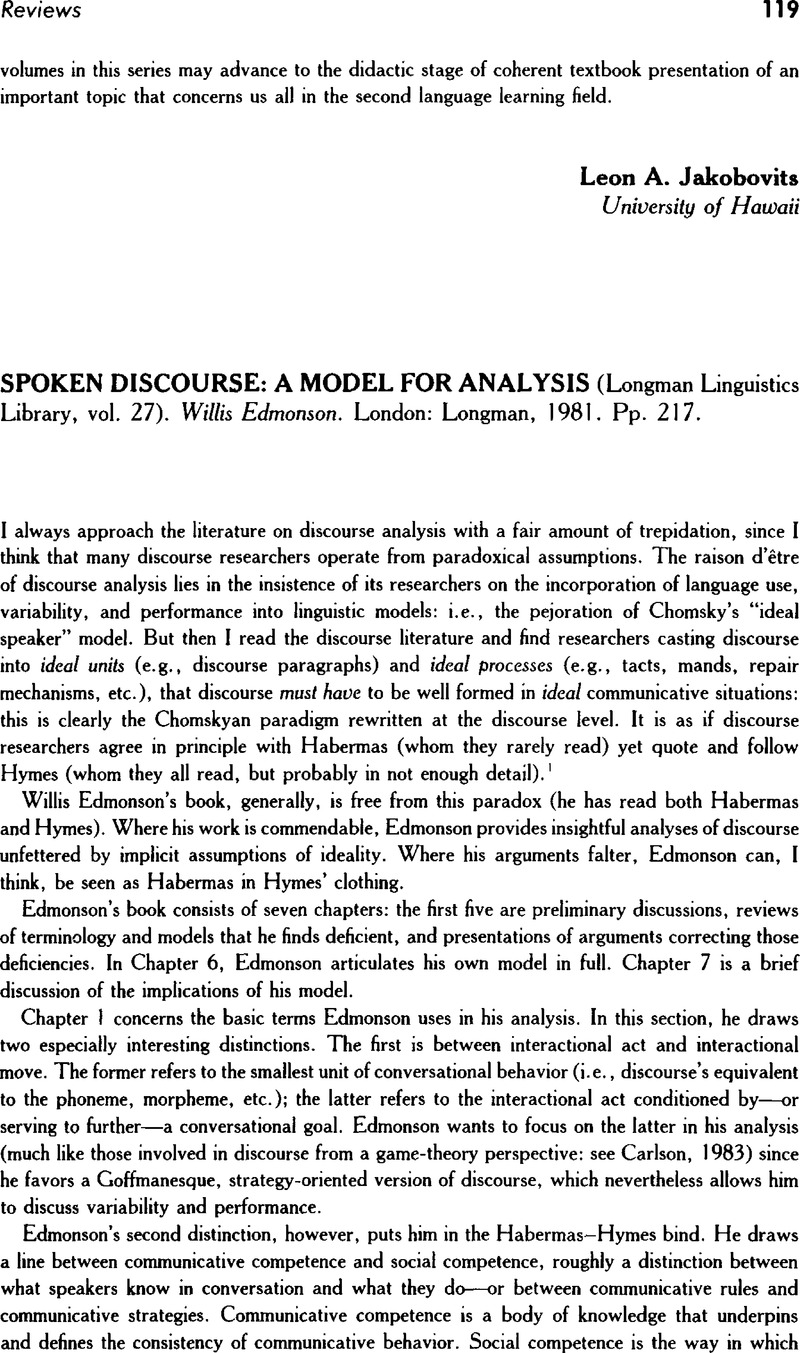No CrossRef data available.
Article contents
SPOKEN DISCOURSE: A MODEL FOR ANALYSIS (Longman Linguistics Library, vol. 27). Willis Edmonson. London: Longman, 1981. Pp. 217.
Published online by Cambridge University Press: 07 November 2008
Abstract
An abstract is not available for this content so a preview has been provided. Please use the Get access link above for information on how to access this content.

- Type
- Reviews
- Information
- Copyright
- Copyright © Cambridge University Press 1985
References
REFERENCES
de Beaugrande, R., & Dressler, W.. 1980. Introduction to textlinguististics. London: Longman.Google Scholar
Frawley, W., & Lantolf, J.. 1984. Speaking and self-order: a critique of orthodox L2 research. Studies in Second Language Acquisition 6(2); 143–59.CrossRefGoogle Scholar
Habermas, J. 1970. Towards a theory of communicative competence. Inquiry 13; 360–75.CrossRefGoogle Scholar
Minsky, J. 1975. A framework for representing knowledge. In Winston, P. (ed.), The psychology of computer vision. N.Y.: McGraw-Hill.Google Scholar
Schank, R., & Abelson, R.. 1977. Scripts, plans, goals, and understanding. Hillsdale, NJ: Lawrence Erlbaum Associates.Google Scholar




